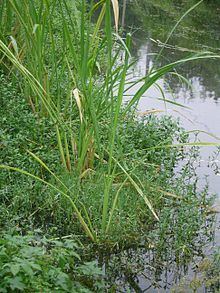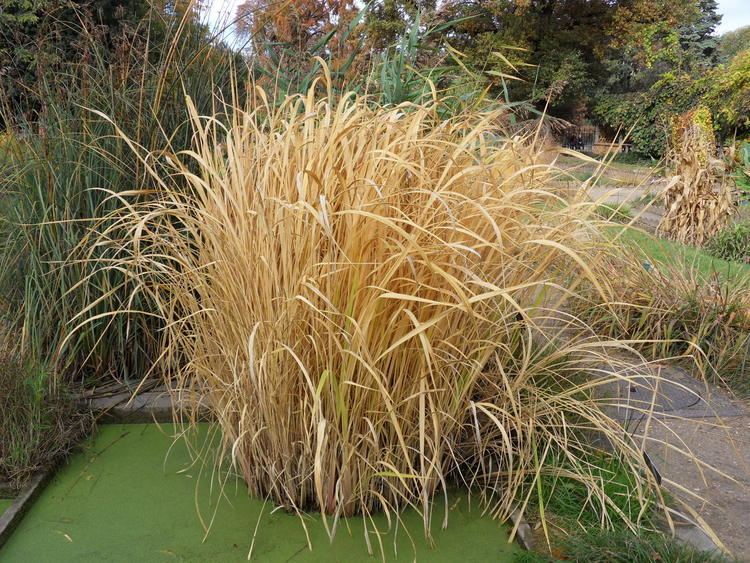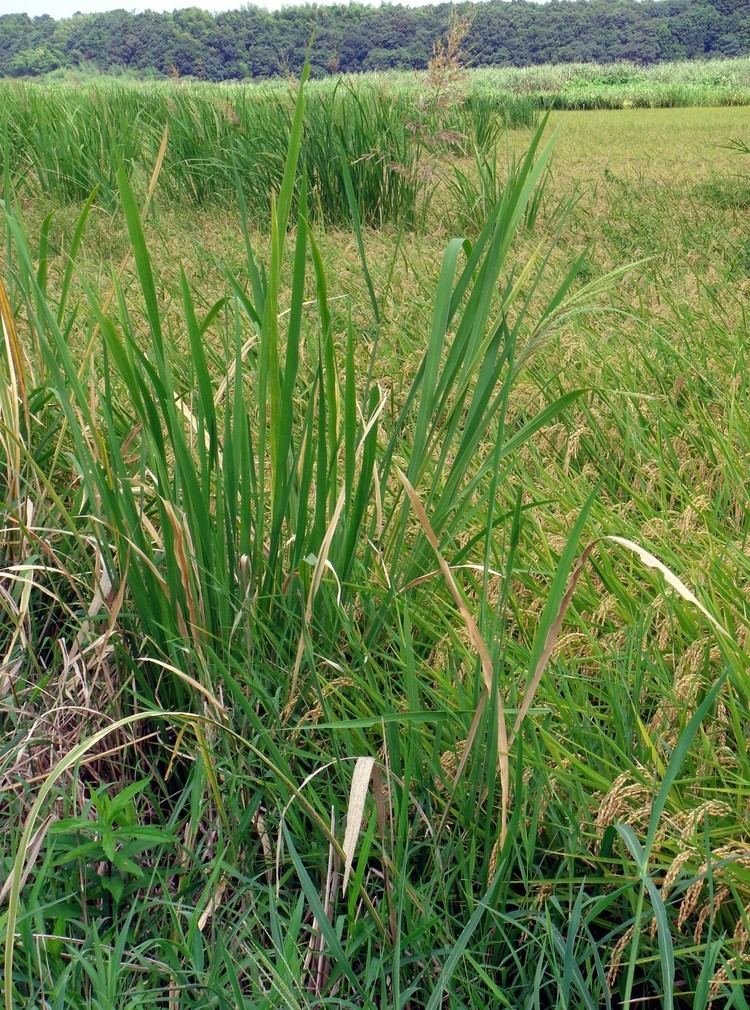Tribe Oryzeae Scientific name Zizania latifolia Rank Species | Subfamily Ehrhartoideae Genus Zizania Higher classification Wild rice | |
 | ||
Similar Celtuce, Sponge gourd, Wild rice, Water chestnut, Winter melon | ||
Zizania latifolia, known as Manchurian wild rice (Chinese: 菰; pinyin: gū), is the only member of the wild rice genus Zizania native to Asia. It is used as a food plant, with both the stem and grain being edible. Gathered from the wild, was once an important grain in ancient China. A wetland plant, Manchurian wild rice is now very rare in the wild, and its use as a grain has completely disappeared in China, though it continues to be cultivated for its stems. A measure of its former popularity is that the surname Jiǎng ( 蔣, 蒋), one of the most common in China, derives from this crop.
Contents

Cultivation

Zizania latifolia is grown as an agricultural crop across Asia. The success of the crop depends on the smut fungus Ustilago esculenta. The grass is not grown for its grain, as are other wild rice species, but for the stems, which swell into juicy galls when infected with the smut. When the fungus invades the host plant it causes it to hypertrophy; its cells increasing in size and number. Infection with U. esculenta prevents the plant from flowering and setting seed so the crop is propagated asexually, by rhizome. New sprouts are infected by spores in the environment, which is generally a paddy. The galled stems are harvested as a vegetable known as Simp: 胶笋; Trad: 膠筍 (Pinyin:jiāo sǔn) and also, in the past, transliterated as gau-soon and kal-peh-soon (also, gau sun and kah peh sung) and jiaobai in China. Its Japanese name is makomotake. The galled section of the stem is 3 to 4 centimeters (1.2 to 1.6 in) wide and up to 20 centimeters (10 in) long. This vegetable has been grown for at least 400 years. It is popular for its flavor and tender texture, and it is eaten raw or cooked. It stays crisp when stir-fried. The main harvesting season is between September and November. This is also typhoon season in parts of Asia, a time when many other vegetables are unavailable. This makes the product more attractive to consumers.
Invasive species

It been accidentally introduced into the wild in New Zealand and is considered an invasive species there. It has been introduced into Hawaii. Importation of the stems to the United States is prohibited in order to protect the North American wild rice species from the fungus.
